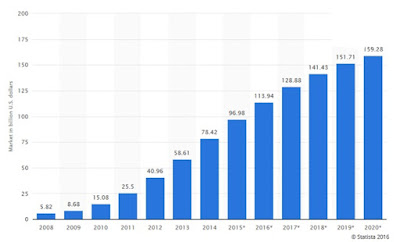Twitter Feed
AFCEA: Cyberspace at the Cross Roads
Starting December 2, 2009, the Armed Forces Communications and Electronics Association (AFCEA) will be putting on a two-day cyberspace conference. Titled “Cyberspace at the Cross Roads: The Intersection of Cyber,…
“Cloud” Shows Promise during Navy Trident Warrior
Last month as part of the Navy’s annual Trident Warrior exercise, Dataline, LLC successfully demonstrated that a standard shipboard communications infrastructure could be used to manage a commercial cloud infrastructure-as-a-service…
Government Cloud Computing Value Survey
As part of a continuing Government Cloud computing education program, Dataline, LLC has released a Government Cloud Computing Value Survey. This online resource has been designed as an aid to…
“Hyper-Standardized” Cloud Computing Environment a Plus for DISA
Henry Sienkiewcz, DISA Computer Services Technical Director, credits the cloud computing “hyper-standardized” environment for the improvement they have been able to deliver through their cloud computing initiative. During remarks at…
Army Deputy CIO Cites Army/DISA Cloud Computing Partnership
This week’s Federal Executive Forum taping highlighted collaboration between DISA and the Army on the service’s transition to cloud computing. Army Deputy Chief Information Officer Mike Krieger called it a…
Navy CIO Discusses Cloud Computing
During this week’s Federal Executive Forum taping, Navy CIO Robert Carey discussed his views on cloud computing. Stating that the NGEN and CANES (Navy Consolidated Afloat Networks and Enterprise Services)…
DoD, DHS and FBI Highlight Identity Management Interoperability
During this week’s Federal Executive Forum, key decision makers from DoD, DHS and FBI highlighted identity management interoperability as their key priority for 2010. Panelist included: Robert Mocny, Acting Director,…
EuroCloud Launches !!
Congratulations to Pierre-Jose Billotte for the successful launch of EuroCloud !! Established as a pan European network, EuroCloud are communities that represent a knowledgeable network of companies engaged local and…
Government Cloud Economics
In the The Economics of Cloud Computing, Gwen Morton and Ted Alford have published an EXCELLENT economic evaluation of the federal government’s push to cloud computing. Anyone interested in this…
Deputy CIA CIO Newest Ulitzer Author
Jill Tummler Singer, Deputy Chief Information Officer at the Central Intelligence Agency (CIA), is now a Ulitzer author. Appointed in November 2006, Ms Singer is responsible for ensuring CIA has…
- Enable cloud service arbitrage based on cost, performance or operational need;
- Help companies migrate operations to the cloud and assist with staff augmentation and training;
- Provide cloud service auditing and SLA monitoring services;
- Help in focusing and managing organizational cloud service demand;
- Provided toolsets to assist in the migration and integration of enterprise applications; and
- Help in change management and the selection and integration of other managed services.
By automating and operationalizing the governance of cloud services, CSBs can efficiently multi-source services and augment them with third party metering and monitoring. Using CSBs, organizations also accelerate their transition to hybrid IT models. This marketplace is typically segmented type of services: cloud brokerage and cloud brokerage enablement, wherein cloud brokerage enablement is further segmented into internal and external brokers. When used internally, cloud enablement platforms helps enterprises adopt the new hybrid IT and multi-sourced operating model. By building organic expertise, companies can personalize IT service consumption and unify
IT service delivery through the use of a corporate self-service store, a dynamic service marketplace, and continuous delivery. This centralized, supply chain approach unifies the order, execution, and management of multi-sourced solutions across legacy and cloud resources, by centrally delegating and tracking execution.
(This post was brought to you by IBM Global Technology Services. For more content like this, visit Point B and Beyond.)
( Thank you. If you enjoyed this article, get free updates by email or RSS – © Copyright Kevin L. Jackson 2016)
Cloud Computing
- CPUcoin Expands CPU/GPU Power Sharing with Cudo Ventures Enterprise Network Partnership
- CPUcoin Expands CPU/GPU Power Sharing with Cudo Ventures Enterprise Network Partnership
- Route1 Announces Q2 2019 Financial Results
- CPUcoin Expands CPU/GPU Power Sharing with Cudo Ventures Enterprise Network Partnership
- ChannelAdvisor to Present at the D.A. Davidson 18th Annual Technology Conference
Cybersecurity
- Route1 Announces Q2 2019 Financial Results
- FIRST US BANCSHARES, INC. DECLARES CASH DIVIDEND
- Business Continuity Management Planning Solution Market is Expected to Grow ~ US$ 1.6 Bn by the end of 2029 - PMR
- Atos delivers Quantum-Learning-as-a-Service to Xofia to enable artificial intelligence solutions
- New Ares IoT Botnet discovered on Android OS based Set-Top Boxes



